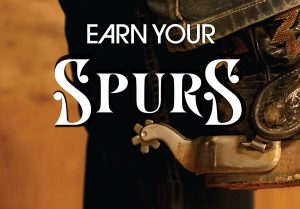paykwik al
online sportwetten
paykasa
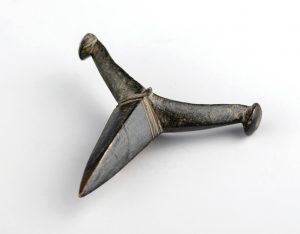 Garth observes a common issue with beginning riders is that they’re not fully aware of what their spurs are doing or how they’re engaging the spur. He says, “Sometimes, you can hear it hit when a rider presses their spur in. Instead, it needs to come in very soft, just like how you would want your hands to be when you take hold of a horse’s nose. You should press softly and then ease your spur in. If a horse isn’t responding, then step up the pressure.”
Garth observes a common issue with beginning riders is that they’re not fully aware of what their spurs are doing or how they’re engaging the spur. He says, “Sometimes, you can hear it hit when a rider presses their spur in. Instead, it needs to come in very soft, just like how you would want your hands to be when you take hold of a horse’s nose. You should press softly and then ease your spur in. If a horse isn’t responding, then step up the pressure.”
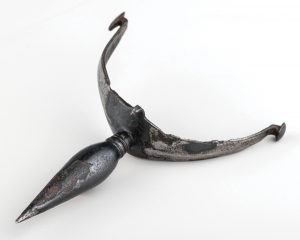 Casey says that pressure plays a key role in the proper execution of a spur stop, because the horse has to be able to feel the change in pressure in order to understand what you want. Casey will only use a spur stop on a finished horse and not as a training method. He says, “I like a more forward horse. Sometimes, it causes issues when you’re still teaching a young horse to go forward.” As an example, he cites the progress of colts he’s readying for the World Show. “At this level, we’re working on buttons and the surer stuff. I can stop them off my feet, roll them back, lope off, and things of that nature.”
Casey says that pressure plays a key role in the proper execution of a spur stop, because the horse has to be able to feel the change in pressure in order to understand what you want. Casey will only use a spur stop on a finished horse and not as a training method. He says, “I like a more forward horse. Sometimes, it causes issues when you’re still teaching a young horse to go forward.” As an example, he cites the progress of colts he’s readying for the World Show. “At this level, we’re working on buttons and the surer stuff. I can stop them off my feet, roll them back, lope off, and things of that nature.”
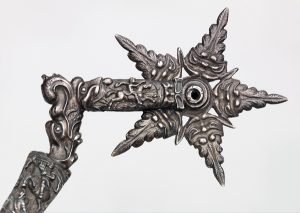 The timing of his stop avoids having the horse stop on the forehand. He continues, “When I’m loping, I like to use it when I know they’ve just driven up, and they’re lifted. When I feel that they’re going to be underneath themselves, that’s when I’ll spur stop them. I take my timing off their hind end and not their front end.”
The timing of his stop avoids having the horse stop on the forehand. He continues, “When I’m loping, I like to use it when I know they’ve just driven up, and they’re lifted. When I feel that they’re going to be underneath themselves, that’s when I’ll spur stop them. I take my timing off their hind end and not their front end.”
paykwik
online sportwetten
paykasa
Earn Your Spurs
Click here to read the complete article
Throughout the centuries, spurs have been intertwined with humans and their unique relationship with horses. They have been buried with their owners or given as offerings to the gods. They have been bestowed as a high honor, and they have been the symbol of triumph. Even today, they continue to be a representation of status, culture, and achievement. Yet, every time a horseman straps on a pair of spurs, there is a fine line between effective communication tool and unintentional weapon.
Spurs have been around for thousands of years. They have been worn by early Celtic, Roman, and Arabian horsemen. Despite that, the basic design of spurs has changed very little during that time. The prick spur was the first type of spur to be invented. It consisted of a pointed goad that was connected to side arms that were leatherbound around the heel. The very earliest spurs were probably simple thorns attached at the back of the heel or ankle. The first bronze examples found were discovered in Etruscan tombs from the 2nd Century BC. Rowelled spurs first appeared in the 1200s. The Great Seal of Henry III of England depicts him in armored regalia with clearly visible rowel spurs.
Early spurs were simply a tool for armies to guide their horses with their legs, while leaving their hands free to fight. Over the centuries, spurs became associated with rank. Gold or gilded spurs were only worn by knights or royalty. Since a knight’s status was closely related to his horse, spurs became an integral symbol of chivalry and were one of the tokens given to him during his knighting. It’s believed that this practice is the origin of the term “earning your spurs.”
Losing one’s spurs was humiliating. A disgraced knight would have his spurs and sword broken in a public ceremony as part of his punishment. In 1302, hundreds of pairs of golden spurs were taken from dead French knights after The Battle of the Golden Spurs and hung in triumph in the abbey church of Courtrai in Flanders.
The use of horses in warfare continued to shape the design and function of spurs. Rowel spurs with very long necks became common in Western Europe in the 15th century when horse armor and elevated saddles were in vogue. Riders used long stirrup leathers with their legs extended forward. In order for a spur to reach the horse, shanks up to a foot in length were needed.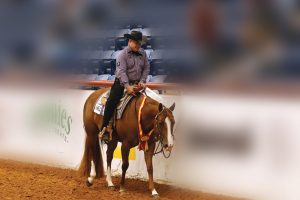

In the first half of the 17th century, the everyday fashion trend for men in high society was to wear boots with spurs. Dapper gentlemen would even wear spurs at court or for dancing. They were pieces of male jewelry and often matched the owner’s sword hilt and horse tack. The quest for spur status could reach the absurd. There are examples of 17th century ornate German spurs with multiple necks and rowels that no one could possible ride in.
Meanwhile, in Spain, spur design saw a fusion of the German silver work, the Northern European large rowels, and the large circular heel plates typical of Moorish spurs. The Spanish colonial period saw the rise of the Vaquero culture and spur designs ideal for long days working with cattle. From Central America, the Vaqueros carried spur design north, where changes in terrain, climate, and utility gave rise to the variations in western spurs that we see in the show pen today.
While we no longer have to wield swords while astride, the goal in most Western classes is to ride effortlessly off the leg, just like the ancient cavalry riders had to do.
Garth Gooding observes that Western Pleasure and Horsemanship are highly dependent on leg and spur use. He stresses, “How you use your spurs is as important now as how we use our hands.” He emphasizes that it’s a matter of pressure and timing. “I preach to our novice clients that you start by coming in with your calf slowly, and then you press in with your spurs.” He says that if he doesn’t get a response from that, he will add a little rolling action rather than tapping with the rowel. “The roll is more of a reprimand. It means that a horse isn’t listening to the press.” He explains that tapping means to go forward, whereas pressing or rolling means get the back up and collect.
 Garth observes a common issue with beginning riders is that they’re not fully aware of what their spurs are doing or how they’re engaging the spur. He says, “Sometimes, you can hear it hit when a rider presses their spur in. Instead, it needs to come in very soft, just like how you would want your hands to be when you take hold of a horse’s nose. You should press softly and then ease your spur in. If a horse isn’t responding, then step up the pressure.”
Garth observes a common issue with beginning riders is that they’re not fully aware of what their spurs are doing or how they’re engaging the spur. He says, “Sometimes, you can hear it hit when a rider presses their spur in. Instead, it needs to come in very soft, just like how you would want your hands to be when you take hold of a horse’s nose. You should press softly and then ease your spur in. If a horse isn’t responding, then step up the pressure.”Gooding explains that while spurs were historically used to make a horse go forward, they can have the opposite effect today. “Most horses are trained to where if you plug with your feet, they slow down. Often, when a novice is going to do a 360 in a Horsemanship pattern, they’ll press their spur in and then just leave it there.” For a lot of horses, that’s an incorrect cue, because it means to keep backing away from the pressure. “They’ll suck too far back in their turn. What you really want is some forward motion and to increase the speed. So, you need to tap more with the spur,” he says.
Garth addresses the difference between spurs being used for moving forward versus stopping. He believes that spurs can be a positive aid for stopping, if used correctly, yet the spur stop is often misused. He says, “If you don’t have the gradual slowdown button, and all you have is the spur stop, I think it makes a horse move choppy and quick, because it’s anticipating. If you’re doing nothing but a spur stop in a Horsemanship pattern, it makes a horse dive down in the front end. A lot of times, a horse will swing their butt from side to side in the stop, because they’re cranky about it. For me, the spur stop is my backup plan if other things fail. If I say whoa, and they ignore it, I’ll go to my spur stop. That’s how I reinforce it in the show ring without being so obvious.”
One mistake he sees with novice riders is that they might have a dull horse, or really short legs, and they think they need a longer spur to compensate. He recommends a shorter spur for shorter riders, because “the longer shanked offset spurs are designed for people who have long legs and have a greater distance to travel to make contact.”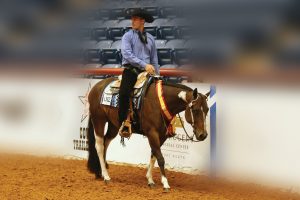

When Garth finds a horse is becoming spur sour, and is unresponsive to relentless spur pressure, he goes back to the basics of self-carriage. He says, “You see people hold a horse so tight in the face and then just grind on them with their spur every stride. I try to train a horse with a lot of self-carriage for that very reason. I can take my legs off completely, and they maintain a good quality of movement while jogging and loping.” He also says that he has to work a spur sour horse back through the process of responding to the calf first, so they’re not overly dependent on spurs. But, he doesn’t remove spurs altogether in the re-learning process. “If they’re already sour to them, they have a bad association with them. It’s like taking someone who hates their job and sending them to Hawaii for two weeks. Chances are, when they come back, they’re not going to like their job any better. Instead, I’ve got to learn to tailor my program so they don’t have a negative association with spurs.”
Casey Willis has worked for Masterson Farms for the last five years, and he’s no stranger to the winner’s circle. Yet, Casey has had plenty of experience with novice riders and has navigated all the pitfalls of using spurs.
“There really aren’t any tips or tricks to spurs or using them. It’s really just a lot of sweat and a lot of work,” he says. “It’s a lot of making mistakes. Probably, the biggest mistake I see is the misuse of pressure, and therefore miscommunication with the horse about what we want. Some people use spurs as a weapon instead of a tool.” He concedes that we’re probably all guilty of that at some point in our lives. “It’s certainly not on purpose, but maybe out of frustration, or where they are in the training process. We all get aggravated.”
Willis says that regardless of skill level or ability, a rider should use the leg first and then use the spur to reinforce. He says, “Everyone has a little different style. You might use your foot a little further forward to move their shoulders more, or a little further back to move their hip more. You might use the spur in between that space to move their whole body.” For Casey, the key is the consistency of the cue blended with a refined control of pressure.
He stresses that it takes practice to get the right amount of pressure at the right time. He says, “Some people can use their spurs exactly the way you want them to right off the bat. Some can’t. You might have a novice who is timid and doesn’t use their feet much. They might require a little more spur. Then again, you might have a novice who is heavy handed and heavy footed. In that case, I take their spurs away, and make them ride barefooted a while to make them learn to feel the pressure they need to use. When they get it right, we can use that knowledge to step up to spurs.”
 Casey says that pressure plays a key role in the proper execution of a spur stop, because the horse has to be able to feel the change in pressure in order to understand what you want. Casey will only use a spur stop on a finished horse and not as a training method. He says, “I like a more forward horse. Sometimes, it causes issues when you’re still teaching a young horse to go forward.” As an example, he cites the progress of colts he’s readying for the World Show. “At this level, we’re working on buttons and the surer stuff. I can stop them off my feet, roll them back, lope off, and things of that nature.”
Casey says that pressure plays a key role in the proper execution of a spur stop, because the horse has to be able to feel the change in pressure in order to understand what you want. Casey will only use a spur stop on a finished horse and not as a training method. He says, “I like a more forward horse. Sometimes, it causes issues when you’re still teaching a young horse to go forward.” As an example, he cites the progress of colts he’s readying for the World Show. “At this level, we’re working on buttons and the surer stuff. I can stop them off my feet, roll them back, lope off, and things of that nature.”Whether training at home or in the show pen, Casey encourages riders to continuously evaluate how their hands, their seat, and their legs communicate what they intend. In Casey’s view, there is no end to learning, evaluating, and growing as a horseman. “That’s just something you have to think about every day. You constantly evaluate when to adjust. You have to reflect on what you’ve done right and what you’ve done that hasn’t worked. That’s part of being a horseman,” he says. His belief applies to spurs, too. You won’t find that magic set of spurs that will get you the same result every day on every horse.
“A lot of people think of spurs as a Go button and not as a shape-up tool,” says APHA and AQHA trainer Scott Weiss. “They’re kind of your throttle, or even your brakes.” He uses spurs with finesse to get lift, collection, and a nice frame. He contends, “You want to make it look effortless, especially in Western Pleasure. When you’re showing, you’re not using your hands. Everything is off your leg and your foot buttons.”
He views proper spur use as a reinforcement of leg aids and not an aggressive power tool. “I was always taught that it’s a give and take. Regardless of whether you have sharp or dull spurs on, when that horse gives to it, you give back. Give them somewhere to go.”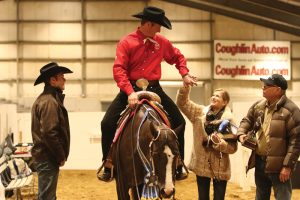

His preference is a heavy spur. “I want to feel like I have something there when I need to use it,” he adds. Scott has a wide selection of spurs to match the needs of each horse. He reasons, “Spurs are like a pair of shoes. You’re not going to go on a hike in flip-flops. If you’re going to go on a run, you aren’t going to wear hiking boots. So, I don’t think you can have just one pair. I have four or five pairs that I use throughout the week depending on what stage each horse is at.”
He shares that a common misunderstanding is thinking that you can strap on one set of spurs and every horse should respond to them the same way. “It varies so much horse to horse,” Weiss says. “You may have a set of cloverleafs on or a set of rock grinders. But what’s right for that horse?” He urges riders to consider a horse’s goals and needs for each day. “You can make your job easier just by using the right equipment.”
He says some show horses get smart to your hand and foot action. “A spur sour horse is one that shows everybody I’m using the spurs. Whether it’s through their tail or their head and neck set, you can see it,” he says. When he encounters that behavior, he changes things up a bit. “I’ll use a different rhythm for my hands and try some different techniques so they don’t associate my hands and feet as working together at the same time.”
Scott is a big proponent of the spur stop. “For Western Pleasure, it’s great to be able to drive the horse into the stop and work entirely off the leg. I also like to be able to use my spurs to ultimately lift their belly and their rib cage,” he says. Weiss introduces it into the training process as soon as he has control of a horse’s body. He says, “I like to be able to keep them collected and have them rounded up a bit. I think, if you introduce it too early, you can run into issues. You have to be able to drop them down and go through everything before you’re able to get them to stop off of spurs. That way, you’re not giving them mixed signals.”
 The timing of his stop avoids having the horse stop on the forehand. He continues, “When I’m loping, I like to use it when I know they’ve just driven up, and they’re lifted. When I feel that they’re going to be underneath themselves, that’s when I’ll spur stop them. I take my timing off their hind end and not their front end.”
The timing of his stop avoids having the horse stop on the forehand. He continues, “When I’m loping, I like to use it when I know they’ve just driven up, and they’re lifted. When I feel that they’re going to be underneath themselves, that’s when I’ll spur stop them. I take my timing off their hind end and not their front end.”One tip he shares is that he likes to use a sharp spur in the show pen to make it less noticeable. “One of the favorite pairs I have is a set of 10 points that Blue Ribbon made. It’s a good in-between spur for showing: it’s not a dull cloverleaf, but it’s not a rock grinder either.”
He has a deep appreciation for old classic spurs that harken back to the Vaquero traditions. He says, “I’ve always dreamt of having a really good set of Garcia spurs. When I think about it, a lot of the spurs I have today are like a replica of a Garcia.”
His last bit of advice is to get a good fitting set of spurs. He says, “Find somebody who makes them or is very knowledgeable about spurs and get them fit right for you. It’s one of my pet peeves. I’ll have a customer come to me and they’ll have spurs that wiggle off their boots because they don’t fit right. If it’s sliding all over, I don’t think it’s doing you any good.” Another piece of advise he gives is to start small. “You can always work your way up to different rowels. But get something you’re comfortable in until you’re good with your feet and legs.” It’s another way of saying that a rider always needs to earn their spurs.










